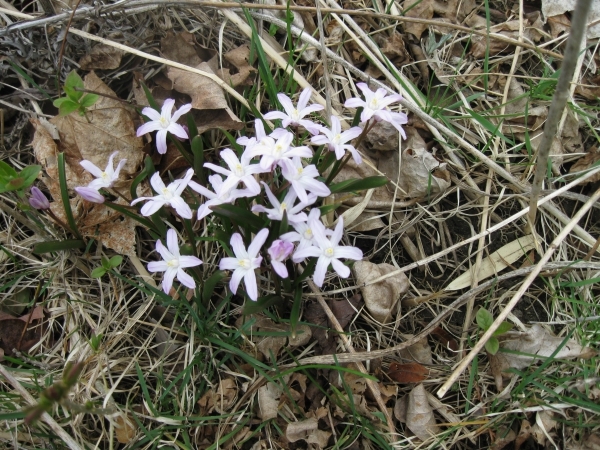BRATTLEBORO — Mark Twain's quote could not be more relevant for us in New England this year. After a very mild winter, Mother Nature has been teasing us mercilessly this spring.
One recent Friday had us enjoying a summer-like 70 degrees. Then, Saturday was an appropriate 50 spring-like degrees. And on Sunday, I awoke to snow on the ground, with flurries continuing during the day and the temperature about 30 degrees, with a brisk wind.
We must be as resilient as the plants to get through these weather variations in good spirits.
Out in my yard, I am working on the fall cleanup I didn't get to, as well as this year's spring cleanup.
I put attention to the areas where I have planted early bloomers first. The hellebores were raked off weeks ago, as they have been in bloom since early March.
I then trimmed the epimedium foliage, since I leave it in the fall for winter interest, but I must get the leaves off before the delicate blooms pop up - sometimes overnight, if it's moist and warm.
Next, I am cutting back perennials that either flowered very late or had interesting fall foliage. The pink daisy chrysanthemums don't start blooming until October, so they are left until snow covers them.
I am clearing spots around the beautiful and very early iris reticulata, pink chionodoxa, and the early-species crocus.
* * *
Having just purchased an extendable pole saw/pruner, I was eager to try it out. I went out intending to just trim the old seed heads off the lilac bush, but I ended up shaping the whole bush.
The time for pruning early-blooming shrubs such as lilac and forsythia is right after they bloom in the spring, but I figured I would sacrifice the number of blooms in exchange for getting this project done. My house is now filled with the branches that had buds on them, in hopes that they might open indoors.
I trimmed my unwieldy forsythia bush back hard last August, just because that was when I had the time and energy to do it. I don't expect many blooms this year, but it should be fabulous next year.
Next on my chore list is to gather all the leaves I raked off the shade garden and spread them in my shrub bed. The leaf mulch is in its third year; it's working well as a weed barrier and moisture retainer, and it is creating new soil. Win-win!
I'm a little late in getting my pepper seedlings started, but I will do that soon, using a heat mat to help them along. Mesclun mix, sugar snap peas, various poppies, and nigella (love-in-a-mist) will be direct sown fairly soon.
I will also start indoors Tithonia (Mexican sunflower) and Old Spice Antique fragrant sweet peas.
* * *
As soon as the stock is coming in to the nurseries, I will be searching for an appropriate shrub for the front garden.
A small magnolia died last summer, probably from borers, and I would like to replace it with something special, as my dear cat Bella, who passed on Valentine's Day, is now buried in that spot.
My first choice so far is enkianthus, a little-known but wonderful shrub that sports clusters of lovely, pinkish, bell-like flowers in late spring.
I like the fact that the enkianthus is taller than it is wide when mature. The shiny green foliage looks great all summer, followed by fiery red color in the fall. I always lean toward plants with multiple seasons of interest.
Some other garden chores that are on my spring list are to thoroughly weed garden areas and to cut deep edgings for the beds to help keep the grass from creeping in.
A couple of garden updates will involve moving 13 peony clumps to the front corner, and trying to do battle with an obnoxious ornamental bamboo that someone planted years ago and that has been overtaking large areas of garden.
I will also work to simplify several beds, moving from mixed perennial beds to the much-lower-maintenance shrub beds.
After weeding, I will spread a {1/2}-inch layer of compost on the non-mulched beds to enrich the soil as well as to help with moisture retention and weed control.
My extensive daylily border will stay, just requiring a few divisions this year. I find this the lowest maintenance and most satisfying part of my gardens.
With bloom times varying from June through September, a wide variety of colors, and no insect or disease problems, what could be better?
We are all eager to get out in our gardens and get things in shape. Now, if only the weather would cooperate!
